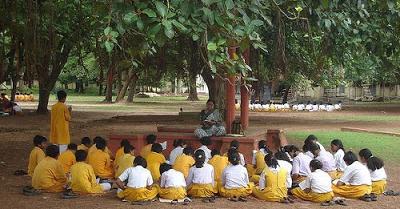
3 minute read
ON THE BRINK
western hoolock gibbons
Image Courtesy: Vijay Cavale Hoolock hoolock The Western Hoolock Gibbon (Hoolock hoolock) is also called white-browed gibbon. It is found in Assam, Mizoram and Meghalaya in India, Bangladesh and in Myanmar west of the Chindwin River. It is classified as endangered by IUCN. It is one of the two ape species found in India. Males are black in colour while females are copper tan. They live together in monogamous pairs and can be found in a family of up to 6. Their calls are referred to as gibbon songs which can be heard from about 2 km away. Their habitat consists of wet evergreen and semi-evergreen forests with contiguous canopy mostly in the hilly regions. Arboreal and diurnal in nature, they are frugivorous but may change to a folivorous diet in the dry season. They also eat insects, spiders and birds eggs. They are important seed dispersers. They move by brachiating from one tree to the other. There are less than 5000 individuals in the wild, which is a decline of more than 90% of population over a period of 30-40 years. Major threats to the species include habitat loss and fragmentation due to anthropogenic pressures. Conservation efforts include creating awareness about the species, protecting their habitats, involving local communities, and listing it under Schedule 1 of the Indian (Wildlife) Protection Act 1972. Some of the suggestions to save this ape species include protecting more areas of their habitat, monitoring their population at regular intervals, plantation of Gibbon friendly food trees and a national level policy.
Advertisement
Water on the moon
NASA’s Stratospheric Observatory for Infrared Astronomy (SOFIA) has confirmed, for the first time, water on the sunlit surface of the Moon. This discovery indicates that water may be distributed across the lunar surface, and not limited to cold, shadowed places. SOFIA has detected that water molecules (H2O) in Clavius Crater, one of the largest craters visible from Earth, located in the Moon’s southern hemisphere. Data from this location reveal water in concentrations of 100 to 412 parts per million – roughly equivalent to a 12-ounce (approximately 350 ml) bottle of water – trapped in a cubic meter of soil spread across the lunar surface. “We had indications that H2O – the familiar water we know – might be present on the sunlit side of the Moon,” said Paul Hertz, director of the Astrophysics Division in the Science Mission Directorate. “Now we know it is there. This discovery challenges our understanding of the lunar surface and raises intriguing questions about resources relevant for deep space exploration.” “Water is a valuable resource, for both scientific purposes and for use by our explorers,” said Jacob Bleacher, chief exploration scientist for NASA’s Human Exploration and Operations Mission Directorate. “If we can use the resources at the Moon, then we can carry less water and more equipment to help enable new scientific discoveries.” SOFIA’s follow-up flights will look for water in additional sunlit locations of the Moon during different lunar phases. (Source: www.nasa.gov)
Trees set sixth-graders up for success
"Hundreds of studies show a positive link between contact with nature and learning outcomes, but the studies on nature near schools focus on young children or older learners. We wanted to make sure the same pattern was true in this vulnerable and overlooked population," says Ming Kuo, associate professor in the Department of Natural Resources and Environmental Sciences at Illinois. It was. Even after taking a whopping 17 variables into account including student demographics, school resources, and neighbourhood characteristics, Kuo and her co-authors found that the more tree cover around a school, the better its standardized test scores in both math and reading. The study included 450 middle schools and nearly 50,000 students in urban, suburban, and rural communities in Washington State. Researchers believe that even in Covid times when students do not go to schools, access to nature or trees around their home can relieve stress in children.
(Source: www.sciencedaily.com)







